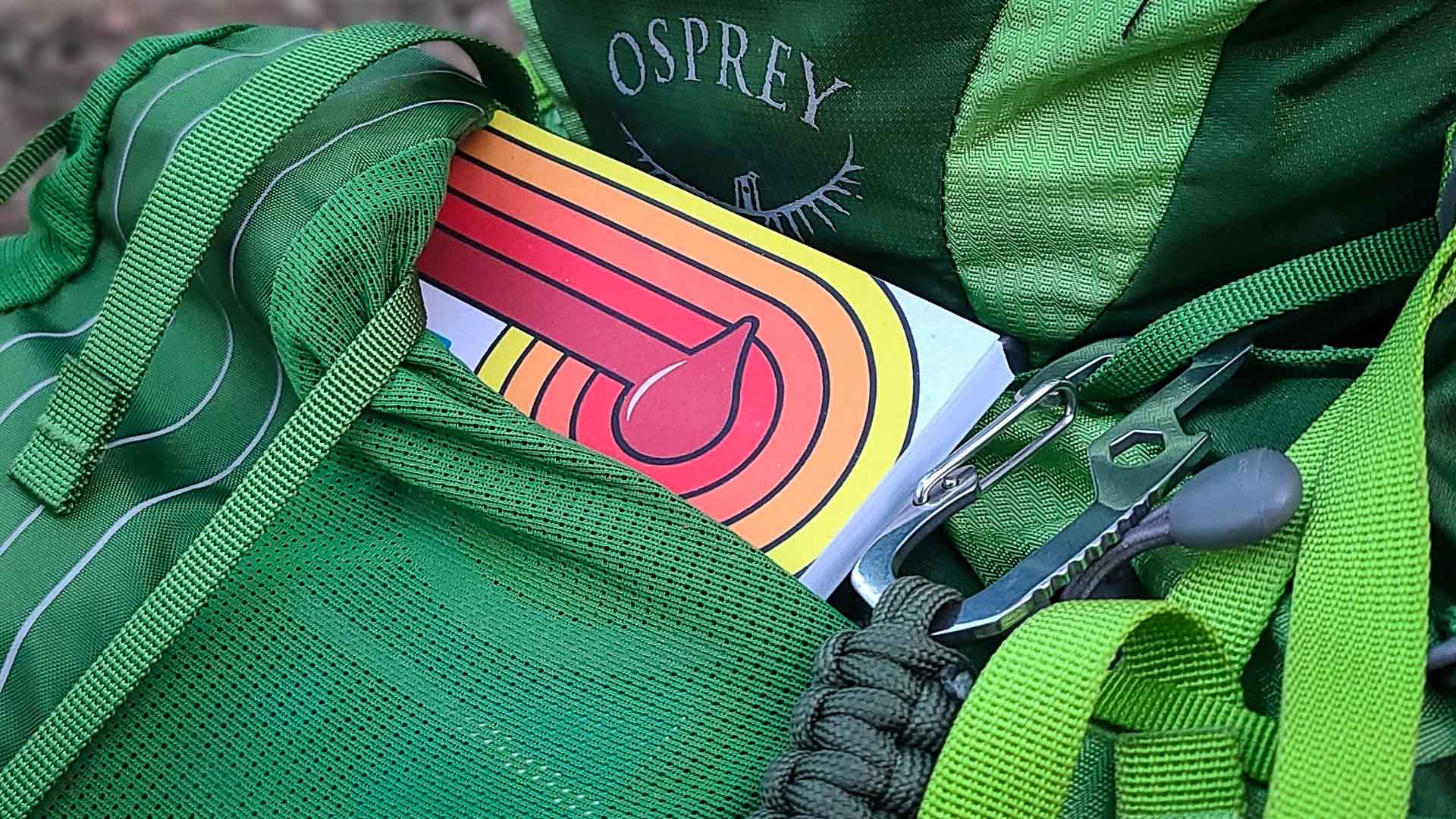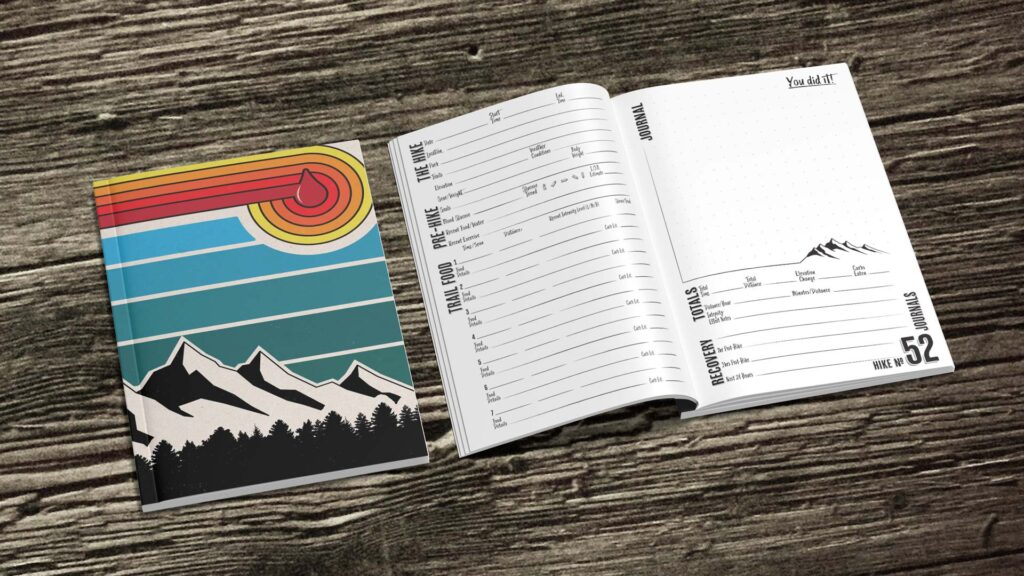
Diabetes Management Changes A Lot With Hiking, Especially Long Distances—But Don’t Let That Stop You!
Hiking with diabetes can seem like an uphill battle (get it?)—but it doesn’t have to be. With good prep, packing, and emergency plans in place, living with diabetes doesn’t have to stop you from going hard in the great outdoors! This article will provide tons of tips that I use every time I hike on how to successfully manage diabetes while hiking and backpacking.
When you’re hiking with type 1 diabetes, there are lots of tweaks to add to your already full diabetes brain! From meal and snack planning to staying hydrated and monitoring your blood glucose levels, to communication with your hiking cohorts, there’s a lot here! I hope you enjoy and learn something from this article…then get hiking!
Contents (tap + at right)
Join the email list to stay in the loop on new releases!
This site participates in the Amazon Services LLC Associates Program and other affiliate programs and may earn from qualifying purchases. You’re never charged more, but it helps out little by little! Check out “Privacy” in the top menu if you need to know more!
Goal: Figure Out How Many Carbs-Per-Hour You Need For Different Types Of Hikes
The best thing I can tell you, as far as a general tip for hiking with type 1, is to pay attention—over multiple hikes of similar terrain or exertion level—to generally how many carbs per hour you need to stay in a safe range. For me, I burn easily 30-60 carbs per hour depending on the hike, the temperatures, and how much weight is on my back.
READ NEXT: More Articles About Type 1 Diabetes & My Experiences
I just got diagnosed with Diabetes and I’m FREAKING OUT!
Diabetes Symptoms For Noobs – My Type 1 Diabetes Symptoms & Diagnosis Story
Travel Medical Insurance, Pre-Existing Conditions, & Type 1 Diabetes
This knowledge will guide how much you need to pack for hikes, how much you eat pre-hike, and what your recovery might look like post-hike and on the drive home. Make sure you pack food for that since the high cardio will likely keep your insulin processing working in overdrive for a few hours after your hike!
Of course, that’s why I created this hiking journal and logbook, so that you can track many hikes and make better, more informed decisions in the future.
 This journal was specifically designed for hiking with diabetes so you can track, journal…and learn from…all of your hikes! Check it out here!
This journal was specifically designed for hiking with diabetes so you can track, journal…and learn from…all of your hikes! Check it out here!
Having type 1 means the rest of your life will be a learning experience, so the sooner you do the work to detail how hiking changes your management, the more safe and comfortable you’ll be.
And you’ll be more confident to try longer and more challenging hikes and adventures!
Connect & Share This Article
Hiking With Diabetes: Diabetes-Specific Gear To Pack
Packing your gear when hiking with diabetes requires quite a bit extra if you truly want to be prepared for anything. The longer the hike, the more you’ll need to add compared to someone that doesn’t live with diabetes. Start with this list, then add what your personal diabetes management requires.
- Additional supplies or ways to administer insulin—in case your main method or pump fails
- More than usual manual blood glucose testing supplies—even if you wear a CGM, and a pocket sharps container or other safe way to dispose of and carry used sharps
- Insulin coolers or storage—to keep your insulin cool and test strips in safe temperature ranges (there are a couple I use for different circumstances in this article)
- Snacks and meals—medium & high glycemic index foods and snacks that can quickly correct an impending hypo or help you stay level for the entire hike…and afterward
- Glucagon and/or other emergency medications—and make sure someone knows where they are, how…and why…to use them
- Tape or patches—If you’re wearing a CGM (continuous glucose monitor), sweat can cause the adhesive to fail, so always patch up or tape up before your hike, or at least be ready on-trail (this brand makes patches for many different skin tones!)
Hiking With Diabetes: General Hiking Gear List
There could be more to include, but this list is a good place to start for day hikes. Most of these things should already be in your pack if you hike a lot, but always do a quick double-check before you head out.
Personally, I always pack a lot of extras in case of any emergency. I assume I could roll an ankle and be in the woods overnight, or encounter someone else that needs help.
I get asked a lot when day hiking if I’m backpacking/overnighting because my pack is pretty big, haha. For me, it’s safety—plus a little more weight for a bit more exercise! Keep in mind that packing a little more weight for a short hike is often less frustrating than realizing you left something you need out of your pack!
- Water & electrolytes—at least double what you think you’ll use—and make sure those you’re hiking with have enough so they’re not depending on your reserves!
- First aid kit—chewable aspirin, bandages, tweezers, alcohol wipes, Moleskin, etc.
- Sun care—hat, sunscreen, sunglasses, etc.
- Extra batteries or power bank—and extra charging cords
- Hiking whistle—and make sure you & your friends know how to use it!
- Headlamp—or form of emergency light…other than your phone…with extra batteries (this company is my go-to; all-metal headlamp housings don’t melt!)
- Multi-tool—or pocket knife or another trail tool
- Compass—and know how to use it
- Bio-break supplies—bears poop in the woods, and so will you; poop responsibly!
- Bug…and bear spray—check state or national park laws first
- OPTIONAL: GPS tracker—especially if venturing out solo
- OPTIONAL: Overnight gear & supplies—sleeping bag, pad, extra clothing, meals, ultralight camp stove, water filter method or self-filtering bottle, shelter, etc.
Please visit our sponsor:
Our Sponsor
